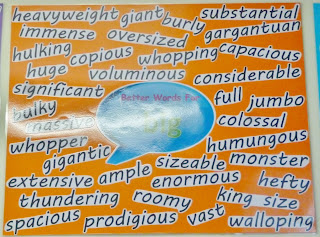While working in a Grade 3 classroom we began a mime unit. For young students it can be hard to isolate the different emotions and how they are shown on our faces and through our body language. To help them with this, I wanted to create a classroom display that they could refer to in order to get tips and remind them what it 'should' look like.
This is what I came up with:
I chose to represent what I considred to be the most common emotions they would need to show in their mime acting: scared, happy, sad, angry and suprised. For each emotion I displyed a list of things they should do with their faces and bodies in order to chow that emotion, as well as real life images to show them visually what they should look like.
Here is a breakdown of each one. I found all of the images on through a general web search, however it was difficult to find clear examples of scared and suprised as often they looked the same!
The instruction card in the middle says:
- Open your eyes as wide as you can.
- Pull your eyebrows up just a little.
- Open your mouth and pull the edges down a little.
- Pull your body away or make it smaller.
- You can hold your hands in front of you or bite your fingernails.
The instruction card in the middle says:
- Pull the edges of your mouth up. Open your mouth to show more hapiness.
- Pull your eyebrows up.
- Make your eyes smaller.
- Show energy through your body.
- Lift your shoulders.
The instruction card in the middle says:
- Pull the edges of your mouth down.
- Slightly pull your eyebrows together.
- Make your eyes a little smaller.
- Slump your body.
- You can put your head in your hands or loosely fold your arms.
The instruction card in the middle says:
- Pull your eyebrows together.
- Narrow your eyes (make them smaller).
- Make your mouth and lips smaller.
- Lean your body forward.
- You can shake your fist, put your hands on your hips or fold your arms.
The instruction card in the middle says:
- Pull your eyebrows up as far as you can.
- Make your eyes big (open wide).
- Open your mouth to make an 'O' shape.
- Move your body up and back.
- You can move your hands to your mouth or cheeks.
I hope this has given you some ideas for your own mime display!


















